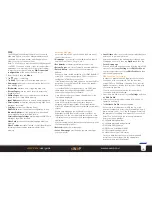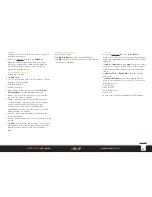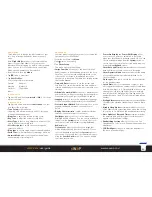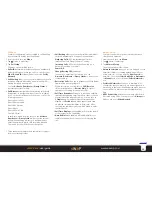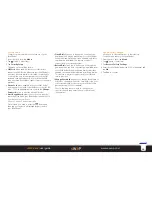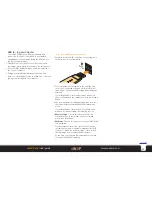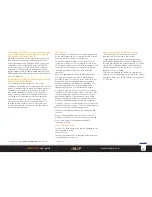
30
sWaP Rebel
user guide
www.s-w-a-p.co.uk
Contents
EU directive 2002/95/EC on the Restriction of the
use of certain hazardous substances in electrical
and electronic equipment (RoHS).
All sWaP products put on the market into the EU and
EFTA Member States are in compliance with the EU
RoHS requirements. The European Union’s Restriction
of Hazardous Substances (RoHS) Directive (2002/95/
EC) restricts the use of lead (Pb), mercury, cadmium,
hexavalent chromium and two bromine-containing
flame retardants: PBB (polybrominated biphenyls) and
PBDE (polybrominated diphenyl ethers) in electrical and
electronic products.
EU directive 2002/96/EC on Waste Electrical and
Electronic Equipment (WEEE)
It is your responsibility to dispose of your waste
equipment by handing it over to a designated collection
point for the recycling of waste electrical and electronic
equipment. The separate collection and recycling of
your waste equipment at the time of disposal will
help to conserve natural resources and ensure that it
is recycled in a manner that protects human health
and the environment. For more information about
where you can drop off your waste equipment for
recycling, please contact your local city office, your
household waste disposal service or the shop where
you purchased the product.
Documentation by
Corporate Text & Design
(www.ctxd.com)
Release 1.1c
FCC warning
Any Changes or modifications not expressly approved
by the party responsible for compliance could void the
user’s authority to operate the equipment.
This device complies with part 15 of the FCC Rules.
Operation is subject to the following two conditions:
(1) This device may not cause harmful interference, and
(2) this device must accept any interference received,
including interference that may cause undesired
operation.
Note: This equipment has been tested and found to
comply with the limits for a Class B digital device,
pursuant to part 15 of the FCC Rules. These limits are
designed to provide reasonable protection against
harmful interference in a residential installation. This
equipment generates uses and can radiate radio
frequency energy and, if not installed and used in
accordance with the instructions, may cause harmful
interference to radio communications. However, there
is no guarantee that interference will not occur in a
particular installation. If this equipment does cause
harmful interference to radio or television reception,
which can be determined by turning the equipment
off and on, the user is encouraged to try to correct the
interference by one or more of the following measures:
• Reorient or relocate the receiving antenna.
• Increase the separation between the equipment and
receiver.
• Connect the equipment into an outlet on a circuit
different from that to which the receiver is connected.
• Consult the dealer or an experienced radio/TV
technician for help.
Data Transmission Cable
Position: The data transmission cable is wrapped inside
the longer watch strap.
Length: 12.7cm
Function: Data transmission, charging and connecting
to the headphone connector.
Specific Absorption Rate (SAR) information
This wireless phone meets the government’s
requirements for exposure to radio waves.
The guidelines are based on standards that were
developed by independent scientific organizations
through periodic and thorough evaluation of scientific
studies. The standards include a substantial safety
margin designed to assure the safety of all persons
regardless of age or health.
The exposure standard for wireless mobile phones
employs a unit of measurement known as the Specific
Absorption Rate, or SAR, The SAR limit set by the FCC
is 1.6 W/Kg.



